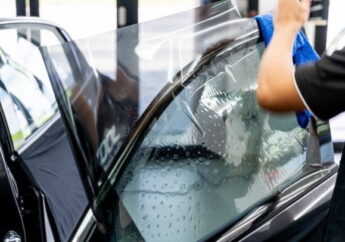Your Best Guide to Saving Money for Your New Car
by Sumona Automotive Published on: 10 December 2021 Last Updated on: 28 March 2024

Many of us will agree that cars aren’t just for transport – if we are, to be honest, we can say that cars can be a status symbol, too. But if you’re on the lookout for a new car and would like something nice but don’t want to spend on something you can’t realistically afford, it pays to be practical.
And being practical includes knowing how much you should set aside for your car in terms of a deposit and a monthly payment if you are going for a loan. But first things first – if you want a better deal, coming up with a good deposit amount is usually the first step.
Tips To Save Money on Your New Car

How can you save money on your new car? Here’s your best guide.
1. Calculate how much you can afford
A car purchase is a significant purchase for most of us, and the standard price of a new model can be as much as $40k. In the same vein, the typical monthly payment for car loans is almost $600 a month.
With this in mind, it would be good to calculate how much you can afford first. This allows you to come up with an amount you need to save for your down payment.
Having a good deposit amount is paramount, and if you have more money to put down, you can lower your monthly payments significantly and won’t have as much interest, either.
You should also compute how much monthly payment you can afford while considering your other utilities and housing expenses. As a rule, your car payments should not be more than 15% of your take-home salary per month.
If you go for a used model, the payments shouldn’t exceed more than 10% of your paycheck, as recommended by experienced dealerships like Youngautomotive.com.
2. Think about other essential factors
You also have to think about other essential factors that can add to the cost of car ownership, like insurance. You usually have to settle this per year, twice a year, or per month. Figure out the amount of insurance your state requires, and go for limits and coverage that fit your needs.
It’s also essential to set aside money for maintenance, and this is why it’s good to find a vehicle that doesn’t come with maintenance expenses that are too high.
Think about gasoline as well – prices are rising as we speak, and gas can take up a considerable portion of your monthly budget. It would be a good idea to look at the gas mileage of the car you want to buy if you want to be more gas-efficient.
Finally, if you are planning to modify your car in any way, whether that’s an upgraded sound system, private plates, or something different entirely, you might want to take this into consideration when looking for your new car and take the money for these modifications out of your budget so you can get them sorted as quickly as possible.
3. Come up with a savings strategy

If you want to be precise about your savings, put a number on the amount you think you should save. Do this when you’ve already calculated the deposit amount you need and have factored in other expenditures or potential expenses.
Then, when you have figured out a good savings number, make sure you save enough per month to achieve your goals. You could, for example, lay off on dining out and watch more of what you spend.
The Final Thoughts
Find a good spot where you can keep your savings – whether it’s a different bank account or credit union account. You can also set up an automatic transfer to automatically set aside money per month. Good luck!
Read Also:
- Debt Consolidation Loans vs. Credit Card Refinancing: Which Is Better for You?
- Where You Should Go Buying Your First Car: Private Sellers vs Car Lots vs Dealerships
- Equipment You Must Have to Make Sure Your Car is Well Maintained
- Hybrid Sports Cars: Fulfilling Your Need for Speed While Saving On Fuel







































































































